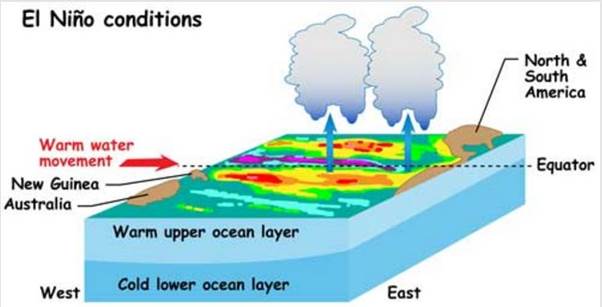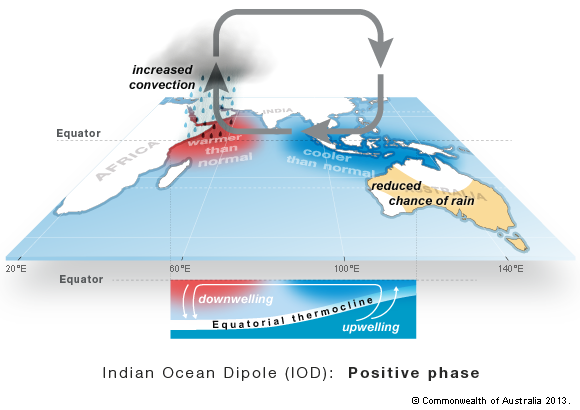Why in news?
- India will likely have a normal monsoon, with a chance of ‘above normal’ rain in August and September, the India Meteorological Department (IMD) said on 15th April 2020.
- The monsoon is arriving late in many States and exiting even later, the India Meteorological Department (IMD) said at its annual monsoon forecast conference.
- IMD also gave new dates for the monsoon’s onset in several cities as part of an update, which it said was essential for a variety of economic activities ranging from agricultural planning to power distribution.
Delay in onset of Monsoon in states
- However, the onset date in Mumbai — historically June 10 — will now be June 11.
- The onset over Chennai has been delayed by three days.
- A significant delay in the withdrawal of the monsoon over northwest and central India has been observed.
Above normal rain likely
- The IMD’s confidence stems largely from global weather models pointing to negligible chances of El Nino, a warming of the central equatorial Pacific that’s associated with the drying up of monsoon rain.
- The expectation of excess rain comes from a forecast by the dynamical model or the Monsoon Mission Coupled Forecast System — that relies on supercomputers, mathematically simulating the physics of the ocean and the atmosphere.
- The Indian Ocean Dipole, a temperature anomaly in the ocean that can increase monsoon rain, was also expected to be in a “neutral” state during the monsoon, the forecast added.
Monsoon
- Monsoon is traditionally defined as a seasonal reversing wind accompanied by corresponding changes in precipitation, but is now used to describe seasonal changes in atmospheric circulation and precipitation associated with the asymmetric heating of land and sea.
- Usually, the term monsoon is used to refer to the rainy phase of a seasonally changing pattern, although technically there is also a dry phase.
- The term is sometimes incorrectly used for locally heavy but short-term rains.
- India’s geography and geology are climatically pivotal: the Thar Desert in the northwest and the Himalayas in the north work in tandem to create a culturally and economically important monsoonal regime.
- As in much of the tropics, monsoonal and other weather patterns in India can be wildly unstable: epochal droughts, floods, cyclones, and other natural disasters are sporadic, but have displaced or ended millions of human lives.
El Nino

- El Niño is a climate cycle in the Pacific Ocean with a global impact on weather patterns.
- The cycle begins when warm water in the western tropical Pacific Ocean shifts eastward along the equator toward the coast of South America.
- Normally, this warm water pools near Indonesia and the Philippines. During an El Niño, the Pacific’s warmest surface waters sit offshore of north-western South America.
- During an El Niño, the trade winds weaken in the central and western Pacific. Surface water temperatures off South America warm up, because there is less upwelling of the cold water from below to cool the surface.
- The clouds and rainstorms associated with warm ocean waters also shift toward the east.
- The warm waters release so much energy into the atmosphere that weather changes all over the planet.
Indian Ocean Dipole

- The Indian Ocean Dipole (IOD), also known as the Indian Niño, is an irregular oscillation of sea surface temperatures in which the western Indian Ocean becomes alternately warmer (positive phase) and then colder (negative phase) than the eastern part of the ocean.
- The IOD involves an aperiodic oscillation of sea-surface temperatures (SST), between “positive”, “neutral” and “negative” phases.
- A positive phase sees greater-than-average sea-surface temperatures and greater precipitation in the western Indian Ocean region, with a corresponding cooling of waters in the eastern Indian Ocean—which tends to cause droughts in adjacent land areas of Indonesia and Australia.
- The negative phase of the IOD brings about the opposite conditions, with warmer water and greater precipitation in the eastern Indian Ocean, and cooler and drier conditions in the west.
- The IOD also affects the strength of monsoons over the Indian subcontinent.



